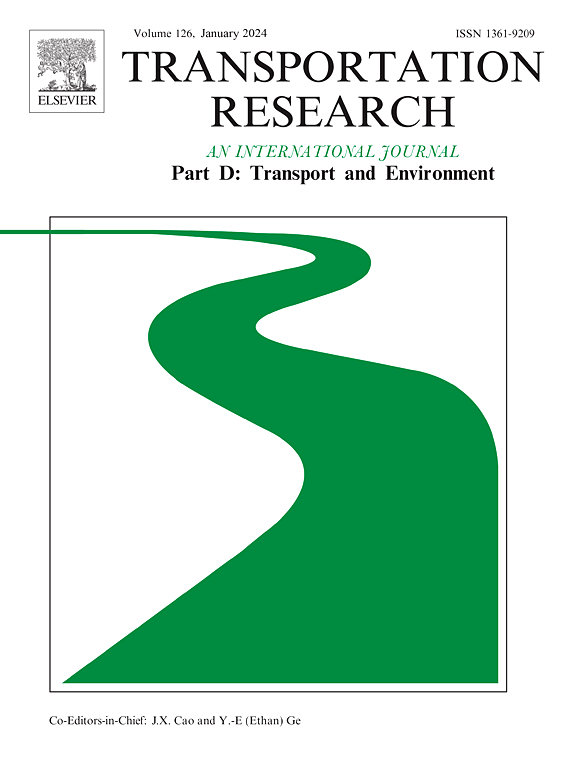电气化教育:探索美国校车车队的电气化潜力
IF 7.3
1区 工程技术
Q1 ENVIRONMENTAL STUDIES
Transportation Research Part D-transport and Environment
Pub Date : 2025-05-10
DOI:10.1016/j.trd.2025.104801
引用次数: 0
摘要
我们分析了美国270辆柴油校车的运行情况,以评估其电气化潜力,并评估各种充电策略对电力需求的影响。我们发现校车通常在工作日遵循两条路线的时间表,其特点是早晚行程之间的停留时间延长。平日出行距离平均为25英里,而周末出行平均为42英里。充电模拟表明,在不改变现有运营模式的情况下,使用现有技术(以1.21千瓦时/英里的速度行驶300英里,19.2千瓦的充电),超过90%的美国校车可以实现电气化。车厂充电是校车电气化的关键推动因素,然而,在其他地点(如学校)战略性地放置充电站可以进一步增加电气化的潜力。此外,我们发现电动校车充电非常灵活,充电管理能够将车站的峰值充电负荷降低77%。本文章由计算机程序翻译,如有差异,请以英文原文为准。
Electrifying education: Exploring the electrification potential of U.S. School bus fleets
We analyze the operations of 270 diesel school buses across the United States to assess their electrification potential and evaluate the impact of various charging strategies on electricity demand. We find that school buses typically follow a two-route schedule on weekdays, featuring extended dwell times between morning and evening trips. Weekday trip distances average 25 miles, while weekend trips average 42 miles. Charging simulations indicate over 90% of the U.S. school bus fleet could be electrified using current technologies (300-mile range at 1.21 kWh/mile with 19.2-kW depot charging) without modifying existing operating patterns. Depot charging is a key enabler of school bus electrification, however, the strategic placement of charging stations at other locations (e.g., schools) can further increase electrification potential. Additionally, we find electric school bus charging to be highly flexible, with charge management capable of reducing peak charging loads at depots by up to 77%.
求助全文
通过发布文献求助,成功后即可免费获取论文全文。
去求助
来源期刊
CiteScore
14.40
自引率
9.20%
发文量
314
审稿时长
39 days
期刊介绍:
Transportation Research Part D: Transport and Environment focuses on original research exploring the environmental impacts of transportation, policy responses to these impacts, and their implications for transportation system design, planning, and management. The journal comprehensively covers the interaction between transportation and the environment, ranging from local effects on specific geographical areas to global implications such as natural resource depletion and atmospheric pollution.
We welcome research papers across all transportation modes, including maritime, air, and land transportation, assessing their environmental impacts broadly. Papers addressing both mobile aspects and transportation infrastructure are considered. The journal prioritizes empirical findings and policy responses of regulatory, planning, technical, or fiscal nature. Articles are policy-driven, accessible, and applicable to readers from diverse disciplines, emphasizing relevance and practicality. We encourage interdisciplinary submissions and welcome contributions from economically developing and advanced countries alike, reflecting our international orientation.

 求助内容:
求助内容: 应助结果提醒方式:
应助结果提醒方式:


